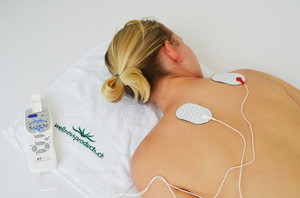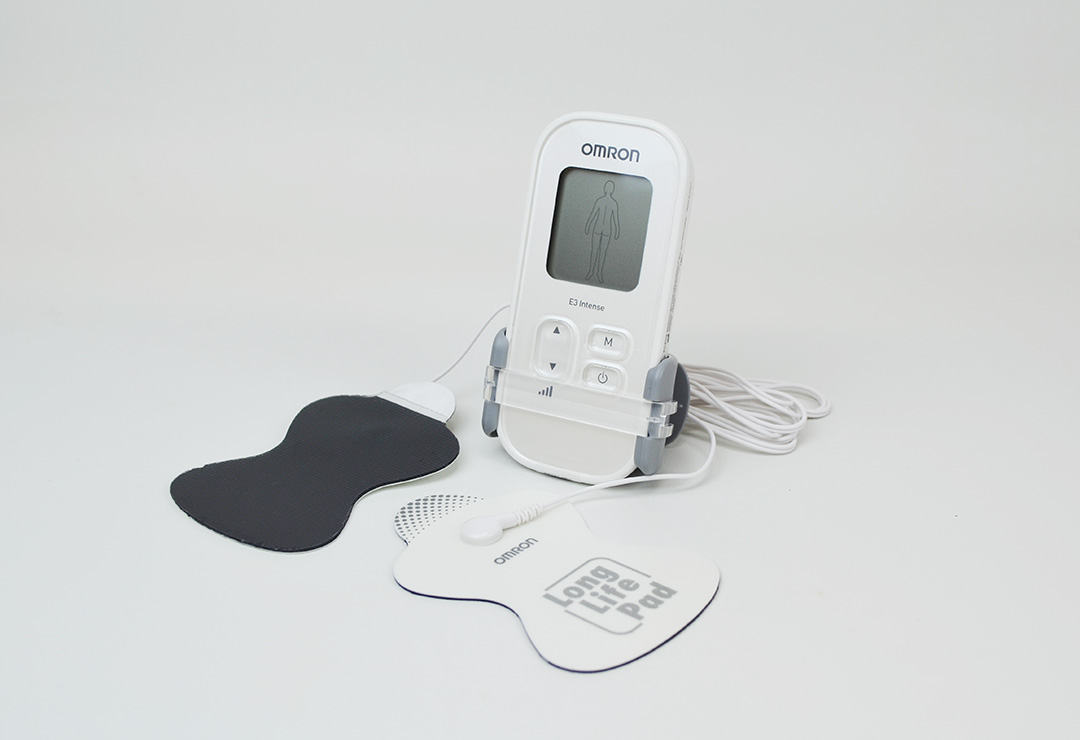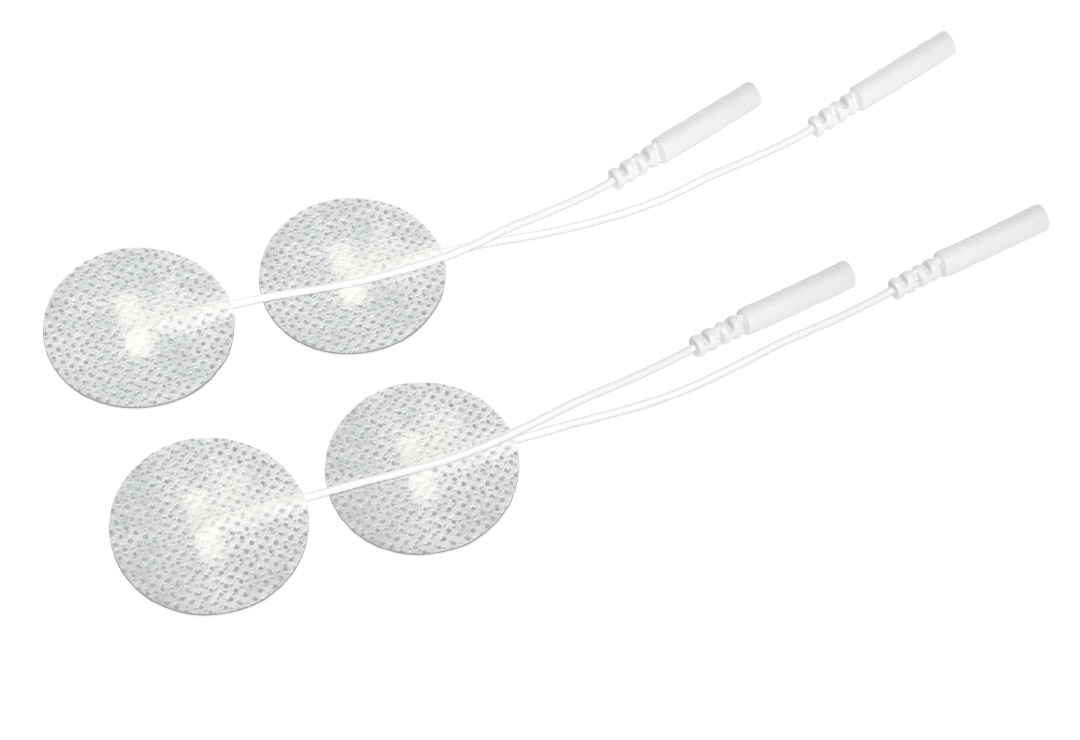The term TENS is an abbreviation for transcutaneous electrical nerve stimulation, a scientifically accepted method that is low in side effects and based on electrical stimulation. In TENS therapy, gentle electrical impulses are transmitted to certain nerves through the skin and unfold two effects: One one hand, the deliberate application of electric impulses makes it possible to block pain signals to the brain. On the other hand, TENS can activate systems that are already present in the body (endorphins), which in turn have an analgesic effect.
The effect of TENS is clinically confirmed, the therapy can be prescribed by a doctor and is therefore usually covered by the health insurance. This near-natural procedure interrupts the pain signals, which would otherwise travel from the concerned point to the spinal cord via nerve pathways, and from there to the brain. This is particularly useful when dealing with long-lasting pain, the cause of which is known, but can't be fixed. In that case the pains have no more warning function, but affect the quality of life of those affected.
Wellnessproducts > Pain treatment with TENS
TENSTENS is a clinically proofed therapy form for pain relief. This overview is meant to give more insight in what TENS exactly means and which applications are available for this therapy.
 TENS is recommended for various diseases and health complaints. The numbing effect simplifies everyday life of those affected, and additional discomfort from poor posture or tension as a result of the pain can be prevented. TENS offers particular relief for chronic, recurrent pain, the cause of which can not be eliminated. This includes, for example, migraine, rheumatic complaints, phantom pain or pain caused by malformations. The treatment can also be used on the face, for example in case of trigeminal neuralgia or atypical facial pain. But TENS can also be used for acute pains such as lumbago or menstrual cramps as well as postoperative pain, bone fractures or labor and birth pains. It is a local treatment, in which electrodes are placed on certain body parts, although injured or diseased skin should be omitted.
For more information on which diseases can be treated with TENS, visit www.TENS.ch. To a certain extent, the low in side effects TENS procedure can also facilitate in reducing or completely discontinuing the use of pain-relieving drugs. When choosing the correct TENS device, the question of whether to go with an an analog or a digital device arises. It's always nice to be able to set parameters such as frequency and pulse width. This is also possible with analog TENS device, that many users prefer. The digital devices are usually more precise or offer more TENS modes. This is because some people have better reactions to a high frequency TENS treatment, while others are more likely to respond to the low frequency burst mode. Last but not least, the respective field of application also helps determine whether a powerful device is better suited or one that fulfills the basic functions and is only used from time to time. When selecting the electrodes, one should mainly consider where the electrodes will be placed. Not every electrode is suitable for a particular body area. Application on the face, for example, requires different electrodes than for the lumbar spine. There are electrodes which are equipped with a self adhesive film or others which should be used with a gel. Different types of electrodes, e.g. carbon or fabric electrodes, vary in durability. Standard electrodes and contact cables have the advantage that they fit various devices and are easy to reorder. However, certain manufacturers offer proprietary electrodes for their TENS devices that offer a specific quality and function. Published on 17.09. by Thomas Toernell |
- FREE DELIVERY (ECONOMY)
- Safe shopping: Payment with TWINT, credit card, Paypal or Postfinance
- Warehouse in Switzerland (Widnau SG)


 Omron E3 Intense TENS pain device, CHF 119.00
Omron E3 Intense TENS pain device, CHF 119.00 Electrodes: 4 pcs, 32mm, CHF 19.00
Electrodes: 4 pcs, 32mm, CHF 19.00